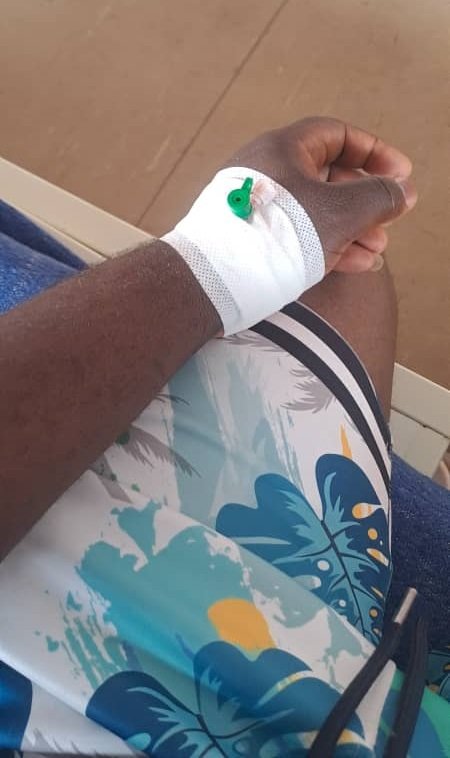…as referral hospital refers patients to private clinics for basic tests
…nurses making a killing from alleged corruption, criminal scheme
By Brighton Chiseva
As a journalist, I’ve spent several years reporting on the dire state of healthcare system in Masvingo in particular at Masvingo Provincial Hospital and Zimbabwe in general.
I wrote about shortages, corruption and the struggles of patients and medical staff alike especially at Masvingo Provincial Hospital. However, despite my extensive coverage, I never thought I’d become a part of the story one day.
That was until I fell ill and had to seek medical attention at Masvingo Province’s biggest referral hospital. Suddenly, I found myself on the other side of the notebook, experiencing firsthand the harsh realities I had written about for so long.
The hospital’s crumbling infrastructure, scarcity of medical supplies, and the overwhelmed staff were all too familiar. I had written about these issues countless times, but living them was a different story altogether.
My experience was a stark reminder that, no matter how much we report on a story, there’s no substitute for lived experience. And as a journalist, I’m more determined now than ever to continue shedding light on the struggles of Zimbabwe’s healthcare system, expose corruption in the hopes that one day, real change will come.
I once wrote about corruption at the provincial hospital which resulted in one staffer who was involved losing his job. Though I was not proud that he lost his job, I thought the incident would serve as a reminder to others but I was wrong.
My ordeal was a wake-up call, a reminder that the struggles of Zimbabwe’s healthcare system were real and devastating. It is a crisis that demands attention, action, and accountability from leaders.
I’ll never forget the day my health took a turn for the worse. It started like any ordinary day, but as I was scrolling through my phone, just after supper, I suddenly felt an excruciating pain in my groin area that shifted to my back. The pain was unbearable, and I couldn’t sleep, sit, walk, or do anything.
Desperate for help, I called several people, hoping someone could take me to the hospital. Luckily, a colleague answered, and despite the late hour, he rushed to my side and took me to the Provincial Hospital since I had no money to afford a private doctor.
We arrived just before midnight and I paid US$9 for my card to be stamped. After a brief wait, I was attended by a nurse who administered an antibiotic and painkiller through a drip. I paid $4 for the medication, which provided some relief.
However, the nurse informed me that the doctor on call had left, and my situation required his attention. She offered me the option to wait or return home and come back early the next morning before 0700 hours. I chose to go back home, but the pain returned around 0100 hours, and I went back to the hospital just after 5 am.
The wait for the doctor was long and he eventually arrived way after 7 and after examining me, he ordered some scans. But what happened next left me stunned. The nurse borrowed my phone, supposedly to call another department, but instead, I was led out of the hospital and into a waiting vehicle, which took me to a private clinic for the scans.
The vehicle, a Toyota Probox was not equipped for transporting patients especially with my condition, raising concerns about safety and potential corruption. I was charged $70 for the scans, but I have no idea how the cost was divided between the three scans I had.
I must give credit where it’s due and would remiss if I did not acknowledge the private doctor who did scans’ impressive efficiency and speed in conducting the scans.
From the moment he was called to his swift arrival, I thought he was coming from another wing. He worked with haste leaving me wondering whether his speed compromised the accuracy of the results or he was simply skilled and well experienced.
However, it’s difficult to ignore the motivation behind his speed, the financial gain.
To make matters worse, I later discovered that I needed blood tests, which no one had informed me about. I had to go to another lab, pay $45, and wait for the results.
“Those scans and tests are done both at the hospital and private clinics,” said one Doctor whom I showed my card and enquired where I could get the services.
However, sources within the hospital revealed that nurses were complicit in the scheme, receiving a share of the profits from the private clinics at the end of each day.
The nurses allegedly call the private clinics to inform them of patients in need of tests, and the clinics then send their staff to collect the patients from the hospital using personal vehicles and are allowed to take blood samples from the hospital.
“What happens is, there are selected clinics and labs that patients are sent to, so the nurse has to call and even record the names of patients they would have referred. They collect their share at the end of their shift,” said a source.
I tried to get information from the private clinics but most of them were reluctant to shed information and some denied ever paying the nurses and one said they would simply give discounts to relatives of the nurse who would have referred people.
“We do not pay them, however, what happens is we give them discounts and at times we give the nurses free service when they come or if they directly refer a relative of theirs,” said one employee from a private clinic.
My investigation revealed more disturbing truth. The scans and tests I was referred for are actually available at the provincial hospital. However, the nurses have a vested interest in referring patients to private clinics, as they receive kickbacks.
By referring patients to private clinics, they are able to profit from the arrangement, rather than allowing patients to access the same services at the hospital.
Furthermore, I discovered that the X-ray and scan department at the hospital often cites electricity challenges as an excuse for not providing the required services. However, if a patient is referred through a private arrangement, the department will miraculously find a way to perform the scans – for a fee, of course.
This fee is often less than what private clinics charge and that the nurses are complicit in the scheme. The nurses also allow the clinics to take blood samples from the hospital.
The Masvingo Provincial Medical Doctor, Dr. Amadeus Shamhu, acknowledged that the hospital refers patients to private clinics for certain tests and scans. However, he failed to provide further comment, despite repeated attempts to contact him.
Minister of Health and Child Care, Dr. Douglas Mombeshora, condemned the practice, stating that it was illegal. He urged those with information to come forward, but noted that he cannot comment directly on the matter without further investigation.
“We have had some reports here and there, but the challenge is that we do not get enough information to aid in investigations. If someone can provide us with comprehensive information, then we can investigate, because that is not allowed,” said Dr Mombeshora.







